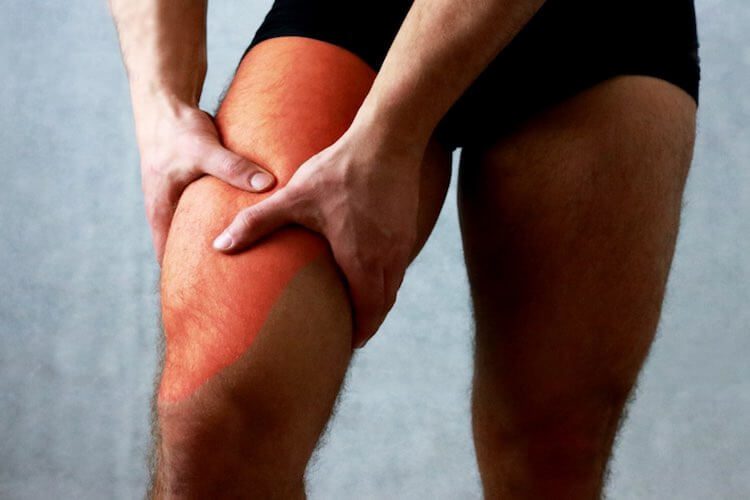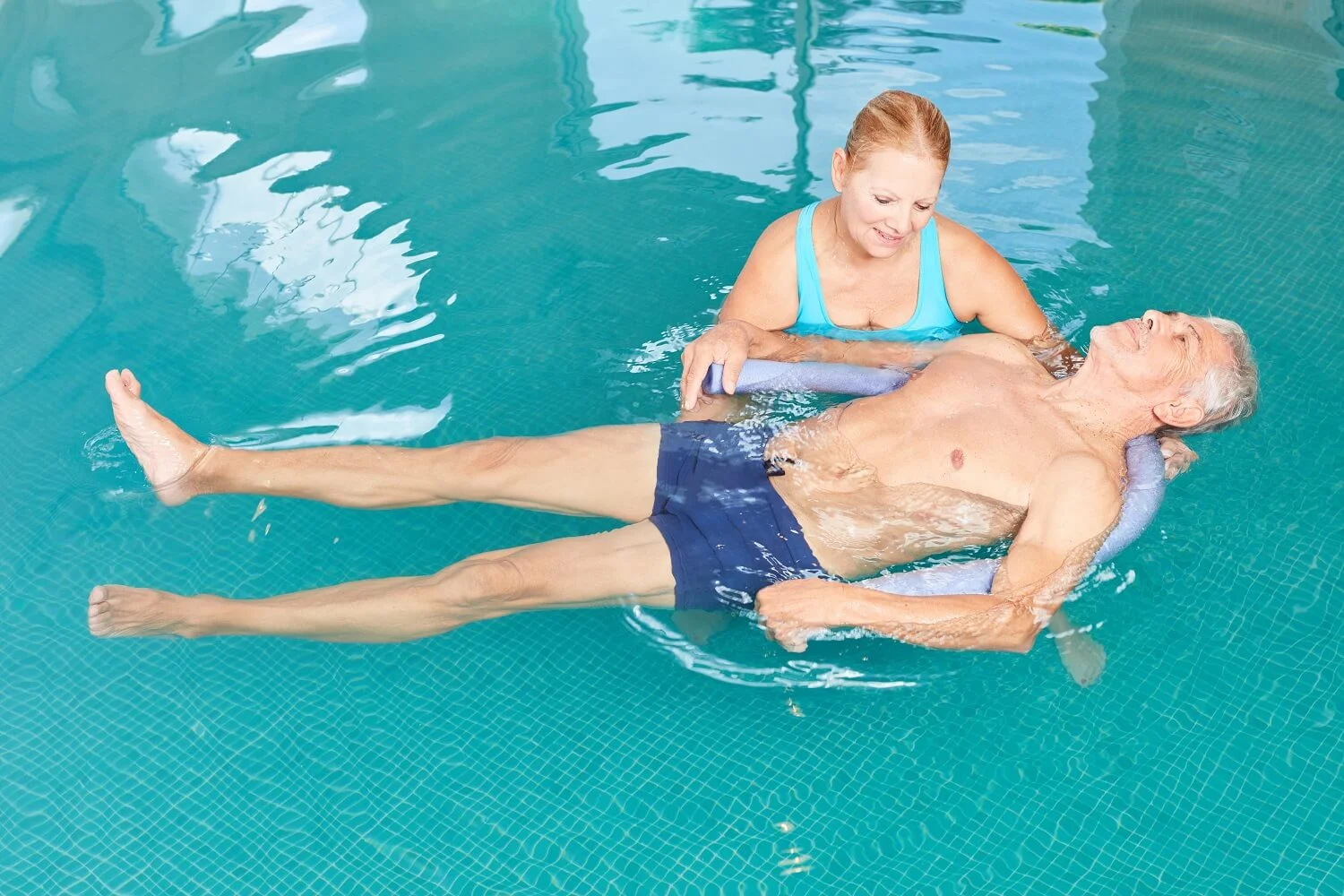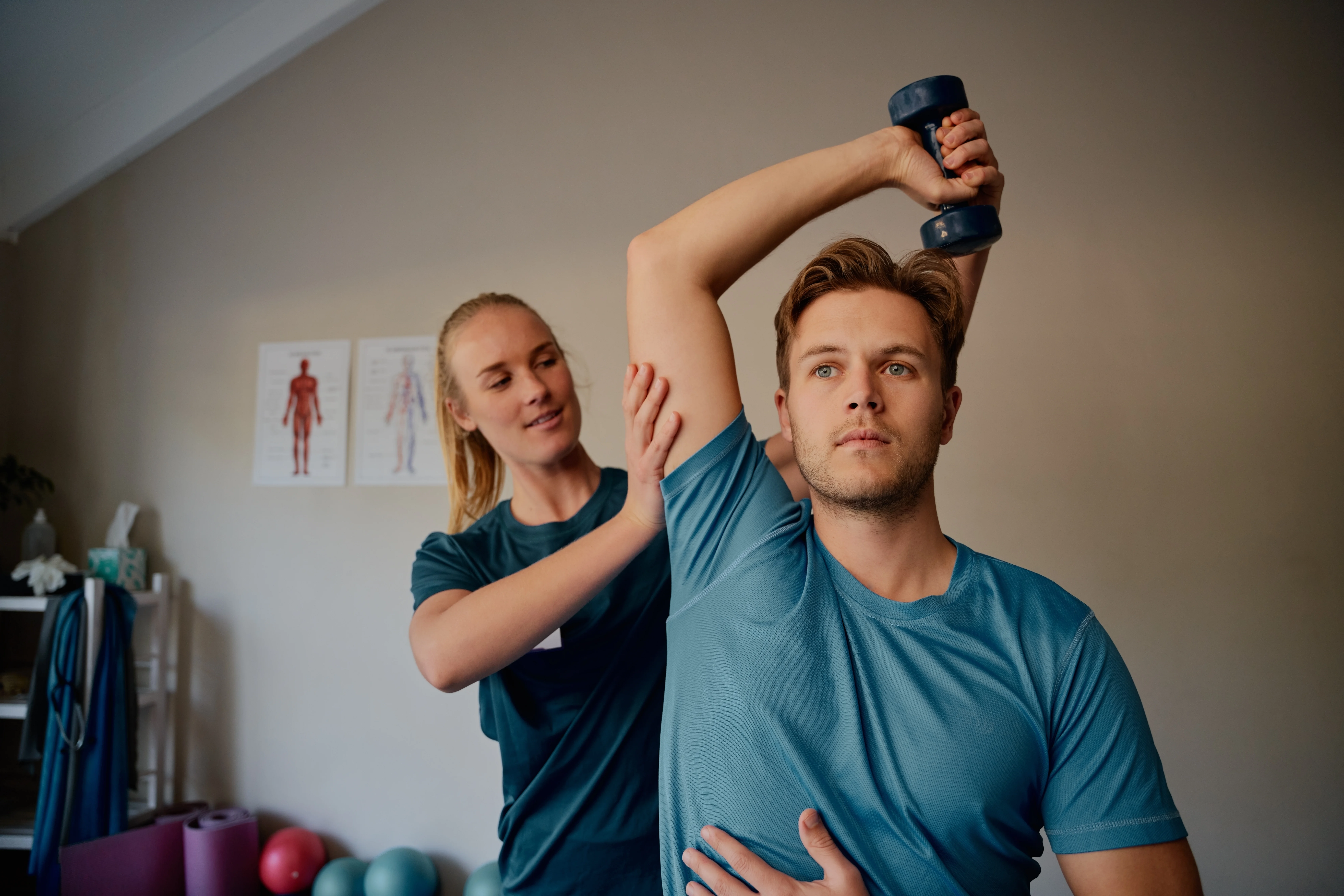The term “Shin splints” is commonly used to describe lower leg pain. However, shin splints are only one of several conditions that affect the lower leg. The most common causes of lower leg pain are muscle soreness, strain; shin splints; and stress fractures. The term “shin splints” describes pain felt along the front of your lower leg, at the shin bone. This pain concentrates in the lower leg between the knee and ankle. Your doctor may refer to the condition as medial tibial stress syndrome*.
For the purpose of this article, I’ve focused on general shin soreness and shin splints, and how to use shin stretches to boost shin splints rehabilitation and recovery.
Side note
Before I move on to shin splints, I want to quickly cover the topic of general shin soreness. Shin soreness is simply an overuse problem. By including adequate rest in your training calendar, and using the R.I.C.E.R. regimen* when pain does occur, you’ll be able to overcome 95 percent of all general shin soreness within about 72 hours. For lower leg pain that goes beyond general shin soreness, a more aggressive approach must be taken.
Table of Contents
ToggleWhat are Shin Splints?
Shin splints, medically known as medial tibial stress syndrome, are a common injury often experienced by athletes and runners. This condition typically arises from overuse or repetitive stress on the shinbone and the tissues attaching the shinbone to the muscles surrounding it.
It’s characterised by pain along the inner side of the shinbone, where muscles attach to the bone. Often resulting from activities involving rigorous running or jumping, shin splints can also be due to improper footwear or poor alignment of the feet and legs.
What are shin splints symptoms?
The most prominent symptom of shin splints is a sharp, throbbing, or aching pain along the inner part of the lower leg. This pain may develop during or after physical activity and might subside with rest, though it can become constant in severe cases.
Other symptoms include tenderness, soreness, or mild swelling in the lower leg. The pain is typically more intense at the start of an exercise and may lessen as the muscles warm up, only to reappear post-activity.
How to treat Shin Splints
Treatment for shin splints involves several approaches. Initially, rest and ice can help reduce pain and swelling. Over-the-counter pain relievers might be recommended for temporary pain relief. Stretching and strengthening exercises will aid in recovery but more importnantly prevent recurrence.
Reviewing and modifying exercise routines to avoid overloading the shins is important. In some cases, physical therapy or the use of orthotics for shoe support might be advised. Gradual return to activity, with proper footwear and technique, is crucial to prevent re-injury.
Shin Splints Anatomy
Although the term “shin splints” is often used to describe various lower leg problems, it actually refers specifically to a condition called Medial Tibial Stress Syndrome (MTSS). To better understand shin splints, or MTSS, an understanding of the muscles, tendons and bones involved is required. (*ref https://cssphysio.com.au)
As you can see from the diagram below, there are many muscles and tendons that make up the lower leg, or calf region. The main components of the lower leg that are affected by the pain associated with shin splints are:
The Tibia and Fibula. These are the two bones in the lower leg. The tibia is situated on the medial, or inside of the lower leg. While the fibula is situated on the lateral, or outside of the lower leg.
There are also a number of muscles that attach to the tibia and fibula. It’s these muscles, when overworked, that pull on the tibia and fibula and cause the pain associated with shin splints.
What Causes Shin Splints?
The pain associated with shin splints is a result of fatigue and trauma to the muscles, tendons and fascia where they attach to the tibia and fibula. In an effort to keep the foot, ankle and lower leg stable, the muscles exert a great force on these bones. This excessive force can result in the tendons and fascia being partially torn away from the bone.
While there are many causes of shin splints, they can all be categorised into two main groups: Overload (or training errors); and Biomechanical Inefficiencies.
Overload (or training errors)
Shin splints are commonly associated with sports that require a lot of running or weight-bearing activity. However, it is not necessarily the added weight or force applied to the muscles and tendons of the lower leg, but rather the impact force associated with running and weight-bearing activities.
In other words, it’s not the running itself, but the sudden shock force of repeated landings and change of direction that causes the problem. When the muscles and tendons become fatigued and overloaded, they lose their ability to adequately absorb the damaging shock force.
Other overload causes include:
- Exercising on hard surfaces, like concrete;
- Exercising on uneven ground;
- Beginning an exercise program after a long lay-off period;
- Increasing exercise intensity or duration too quickly;
- Exercising in worn out or ill fitting shoes; and
- Excessive uphill or downhill running.
Biomechanical Inefficiencies
The major biomechanical inefficiency contributing to shin splints is that of flat feet. Flat feet lead to a second biomechanical inefficiency called pronation. Pronation occurs just after the heel strikes the ground; the foot flattens out and then continues to roll inward.
Over-pronation occurs when the foot and ankle continue to roll excessively inward. This excessive inward rolling causes the tibia to twist, which in-turn, over stretches the muscles, tendons and fascia of the lower leg.
Other biomechanical causes include:
- Poor running mechanics; see your Physio.
- Tight, stiff muscles in the lower leg (the shin splints stretches below will help with this)
- Running with excessive forward or backwards lean;
- Landing on the balls of your foot; and
- Running with your toes pointed outwards.
How-to-Prevent-Shin-Splints
Prevention, rather than cure, should always be your first aim. I was very surprised when researching this topic at the number of articles that totally neglected any mention of preventative measures. They all talked of rehab and cure, but only one out of twenty took the time to address the issue of prevention in any detail.
Even before any sign of shin soreness appears there are a number of simple preventative measures that can be easily implemented.
Since about half of all lower leg problems are caused by biomechanics inefficiencies, it makes sense to get the right advice on footwear. Your feet are the one area you should not “skimp” on. The best advice I can give you concerning footwear is to go and see a qualified podiatrist for a complete foot-strike, or gait analysis.
They will be able to tell you if there are any concerns regarding the way your foot-strike or gait is functioning. After your foot-strike has been analysed, have your podiatrist, or competent sports footwear sales person recommend a number of shoes that suit your requirements. Good quality footwear will go a long way in helping to prevent many lower leg problems.
A thorough and correct warm up will help to prepare the muscles and tendons for any activity to come. Without a proper warm up the muscles and tendons will be tight and stiff, which may limit blood flow to the lower legs and result in a lack of oxygen and nutrients for those muscles. Before any activity be sure to thoroughly warm up all the muscles and tendons that will be used during your sport or activity.
Stretches for Shin Splints
Below are just a few examples of effective calf and Achilles stretches for shin splints. But don’t rely on just a few stretches; it’s important to do a range of stretches for the shins, Achilles, upper and lower calf, and hamstrings.
General Stretch Instructions
Slowly move into the stretch position until you feel a tension of about 7 out of 10. If you feel pain or discomfort you’ve pushed the stretch too far; back out of the stretch immediately. Hold the stretch position for 15-20 seconds while relaxing and breathing deeply. Come out of the stretch carefully and perform the stretch on the opposite side if necessary. Repeat 2 or 3 times. If you feel pain > 4 out of 10 AFTER you’ve stopped stretching…you’ve done too much.
Standing Heel-Back Achilles Stretch
Stand upright and take one big step backwards. Bend your back leg and push your heel towards the ground. Make sure the toes of your back leg are facing forward. Letting your toes point to one side will cause this stretch to put uneven tension on the calf muscles. Over an extended period of time, this could lead to a muscle imbalance. Regulate the intensity of this stretch by lowering your body.
Standing Calf Stretch
Stand with one knee bent and the other leg straight out in front. Point your toes towards your body and lean forward. Keep your back straight and rest your hands on your bent knee. Make sure your toes are pointing upward. Letting your toes point to one side will cause this stretch to put uneven tension on the calf muscles. Over an extended period of time, this could lead to a muscle imbalance.
Leaning Heel-Back Calf Stretch
Stand upright and lean against a wall. Place one foot as far from the wall as is comfortable and make sure that both toes are facing forward and your heel is on the ground. Keep your back leg straight and lean towards the wall. Make sure the toes of your back leg are facing forward. Letting your toes point to one side will cause this stretch to put uneven tension on the calf muscles. Over an extended period of time, this could lead to a muscle imbalance.
Kneeling Achilles Stretch
Kneel on one foot and place your body weight over your knee. Keep your heel on the ground and lean forward. This stretch can put a lot of pressure on the Achilles. Ease into this stretch by slowly leaning forward.
Shin Splints Treatment
Firstly, be sure to remove the cause of the problem. Whether it be a biomechanical problem, or an overload problem, make sure steps are taken to remove the cause.
If shin splints are causing you a lot of pain, you can use ice to help reduce the pain. But please be aware that while ice will help to relieve some of the pain associated with shin splints, it will not fix them or cure them.
The next phase involves a number of physiotherapy techniques. The application of heat and massage (or foam rolling) are very effective for speeding up the healing process of the muscles and tendons in your lower legs and shins.
From personal experience I’ve found this form of treatment is the most effective. The application of heat and deep tissue massage on the affected area brings the best results. If you suffer from shin splints, be sure to spend at least a few minutes massaging the affected area both before and after you exercise.
Once most of the pain has been reduced, it is time to move onto the rehabilitation phase. The main aims of this phase are to regain and improve the strength, power, endurance and flexibility of the muscles and tendons that have been compromised.
Ref: Shin Splints Mayo Health Care Channel.
Shin Splint My Doctor.com.au
Photo’s pictures HEP2go
Ashton Lucas
Director
Principal Physiotherapist at CBD 428 GEORGE



